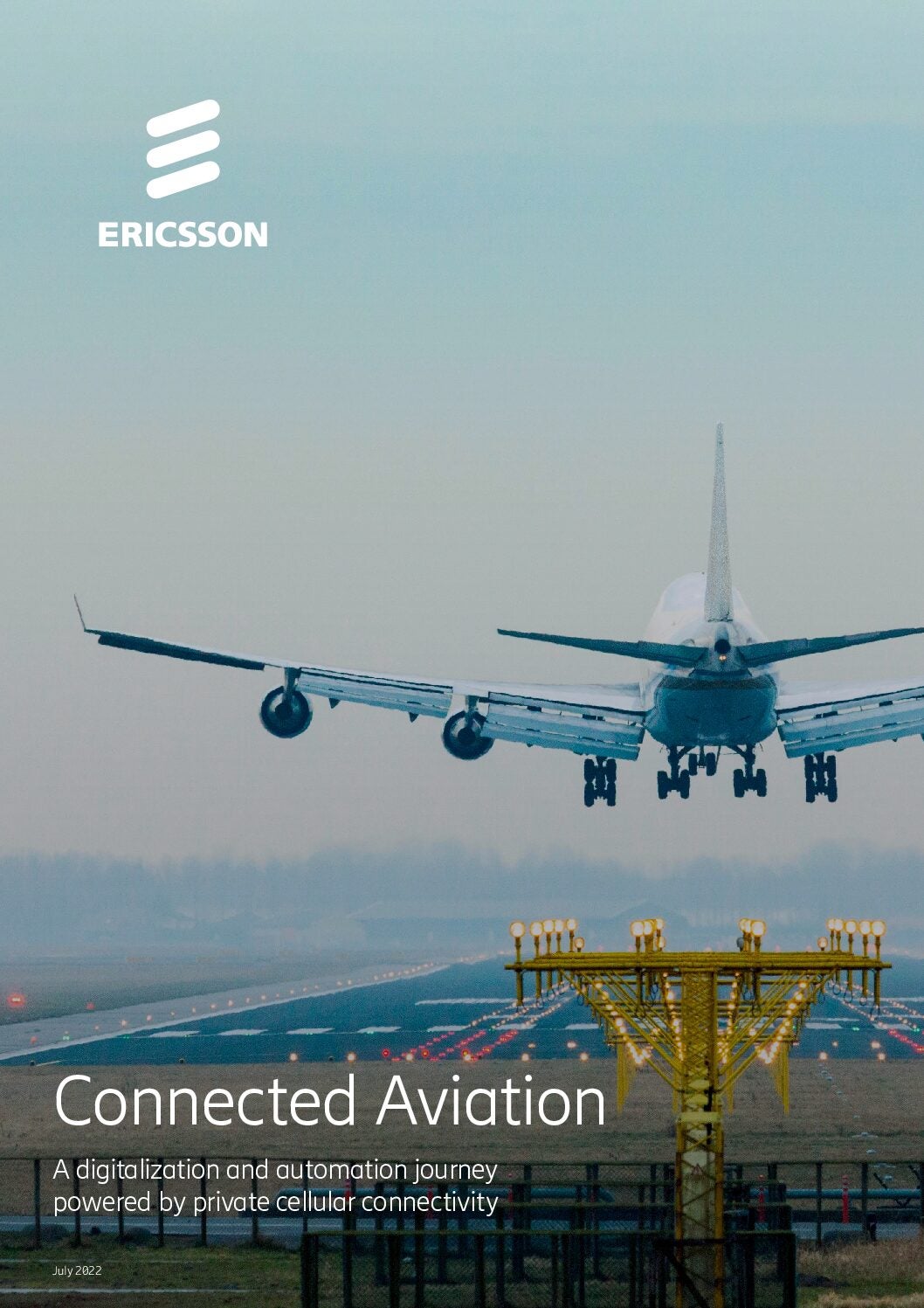
Private 5G is redefining industries – and for airports, it offers high-performance, reliable, and secure connectivity that enhances efficient and seamless ground operations. Traditionally, airside operations have relied on limited wireless connectivity, primarily through radio communications at the gates. This underscores the need to upgrade critical applications from outdated legacy systems to a unified cellular platform.
However, there’s also a strong case for cellular connectivity inside the terminal, where airports have heavily relied on Wi-Fi or wired Internet connections. Private 5G not only supports current connectivity requirements but can also transform the terminal experience and future-proof operations, enabling advanced technologies such augmented reality (AR) and artificial intelligence (AI).
To harness the power of private 5G in both these instances, we’ve put together five key use cases that will deliver significant value to airport operators, modernizing the passenger journey inside the terminal and beyond.
1. Connected commercial operations and airport retail innovation
Retail and food and beverage stores constitute significant revenue streams for airport operators, and important amenities for passengers. These commercial operations all rely heavily on connected Point-of Sales (POS) tools to transact properly.
Today, the primary connectivity use case in airport retail is in these Point-of-Sales (POS) tools. While traditional Wi-Fi networks offer speed, 5G networks excel in providing reliable, secure connectivity with the ability to support multiple mobile handheld scanners simultaneously. For retail stores, this enables secure credit card transactions, rapid inventory updates, and efficient, multi-lingual customer service through mobile apps.
The transformative power for 5G in airport retail lies in facilitating new retail formats such as 24 hour cashier-less stores (e.g. Travelwell, an autonomous convenience store at Hong Kong International Airport) and opening up opportunities to leverage innovative technologies. Some shops already deploy AI and computer vision technology to monitor product and customer movements, and others are interested in testing VR and augmented reality (AR) to build enhanced customer experiences.
2. Camera surveillance and security
Camera surveillance has long been a reliable method for monitoring activities in terminals. But today’s cameras are primarily connected with fiber cables, making their placement limited to areas with ethernet wiring. In contrast, 5G-enabled cameras can be installed anywhere. Airports often expand, undergo layout changes or experience shifting security needs due to construction or other factors requiring quick deployment or relocation of cameras. Private 5G networks simplify adaptation to these evolving requirements.
Beyond mobility, private 5G networks offer scalability, enabling the deployment of a large number of movable surveillance cameras, such as bodycams for security personnel or automated guided vehicles. These cameras can track individuals or objects on the move, proving them invaluable for incident response and quick inspections.
With edge computing support, private 5G networks also allow video feeds to be processed and analyzed in near real-time by AI analytics engines directly at the network edge, eliminating the need to transmit data at a central location. This capability paves the way for implementing advanced vision technologies, including facial recognition and real-time object-tracking, which require high-bandwidth and ultra-low latency.
3. Maximizing backhaul connectivity for IoT gateways
State-of-the-art airport technologies, like automation and facial recognition for contactless check-ins, depend heavily on real-time data collected from these devices. Airport operators need as much data as possible to build reliable models for AI applications, such as smart temperature and air quality controls, digital twin modeling and more. A private 5G network ensures airports have reliable and high-quality coverage anywhere and everywhere, supporting this growth.
Currently, IoT ecosystems are only partially wireless, with signals sent back to a wired hub or gateway for processing. Private 5G connectivity can unlock greater flexibility, allowing airports to adapt their devices to dynamic environments, while accommodating future expansion. Additionally, private 5G networks provide enhanced security and privacy with robust encryption protocols that safeguard sensitive data.
5G networks can also seamlessly handle the high density of connections within terminals without compromising performance, which is essential as airport technology continues to evolve. It’s another reason dedicated network resources through a private 5G solution makes sense, as airports can offload IoT traffic to free up Wi-Fi for passenger use.
IoT also enables asset tracking, a crucial process for efficient airport operations. Current asset tracking technologies often consist of disparate solutions that don’t always work well everywhere —such as GPS signals that work outdoors but not inside terminals. Private 5G networks enable the integration of various connected devices, offering a reliable and secure way to track assets throughout the airport.
Beyond real-time tracking, a private 5G network can collect historical data on asset usage. This data can then be used to identify trends, optimize asset utilization, and make informed decisions about asset allocation and replacement.
4. Smarter baggage handling
Everyone who has flown understands how important a seamless baggage handling experience is—and how stressful a complicated and unreliable system can be. Reliance on barcode technology over the years has resulted in a significant amount of mishandled baggage. With private 5G, it’s easier to track the entire journey from start to finish, from curb to plane.
Radio Frequency Identification (RFID) technology uses radio waves to identify people or objects. Given recent advancements to the technology, it is expected to reduce mishandling rates for baggage by 25%, resulting in substantial savings for airlines, and just as importantly, a better passenger experience. Many airports, such as Newark International Airport, Schiphol in Amsterdam, and Gardermoen in Oslo are already using RFID to track bags as they’re sorted, loaded onto flights, and delivered to baggage claim. The deployment of RFID systems can significantly benefit from private 5G due to its inherent reliability, flexibility, and security.
As technology matures, future systems like autonomous Unit Load Devices (ULDs), can enable fully automated baggage loading, but this will require the low latency and increased data capacity of private 5G networks.
Regardless of the tracking solution, private 5G networks simplify the process and reduce common issues. Sensors and scanners equipped with 5G technology can be installed on equipment to collect performance data, allowing airports to detect possible problems before they escalate into major disruptions.
5. Critical communications for operations
Legacy communication tools are nearing the end of their lifespan. As airports transition to new technology for critical communication, futureproofing is essential. One of the key features of private 5G technology is Push-to-X (PTX), which allows instant sharing of information, whether it’s voice, video, or data among various recipients, such as airport staff, security, or emergency responders.
This tool can revolutionize communication and operational efficiency within airport terminals where quick, coordinated responses are essential, during security incidents or medical emergencies.
With high data transfer speeds, low latency, increased security, high reliability and support for very large number of endpoints, private 5G networks can support the wide variety of applications within terminals, from real-time baggage tracking to security surveillance. As airports work to transform, 5G networks provide a unified connectivity that works across applications and with existing connectivity like Wi-Fi, promising a future where airports can operate with enhanced efficiency and connectivity for a streamlined travel experience, from start to finish.



